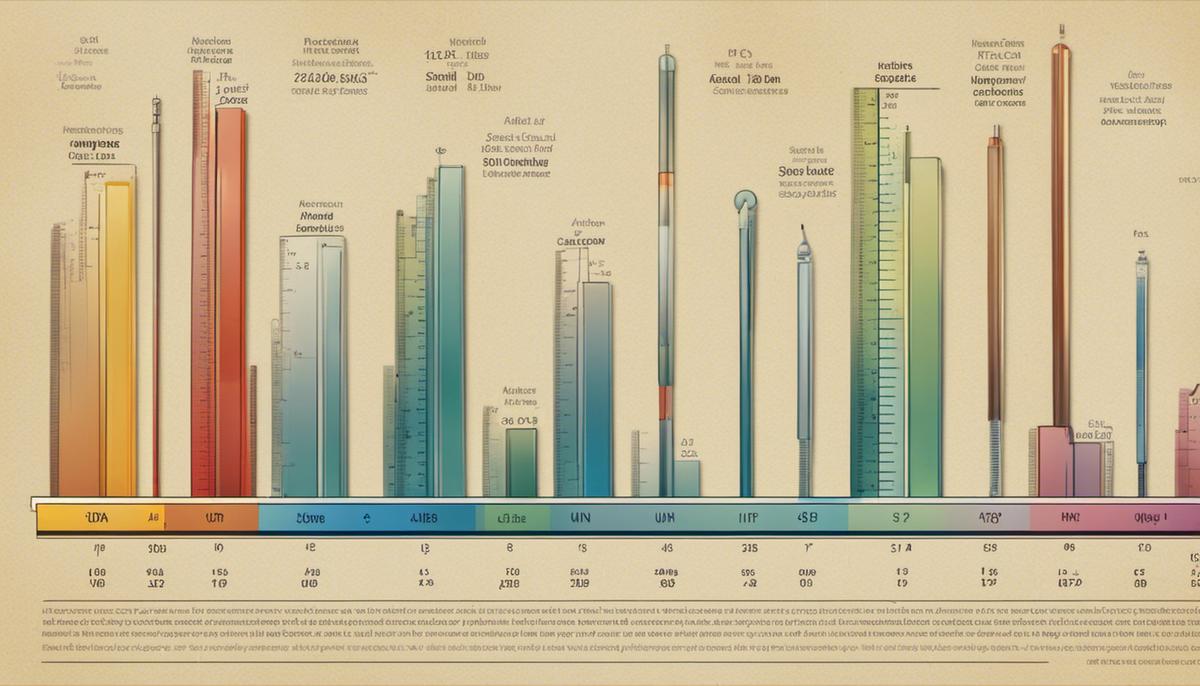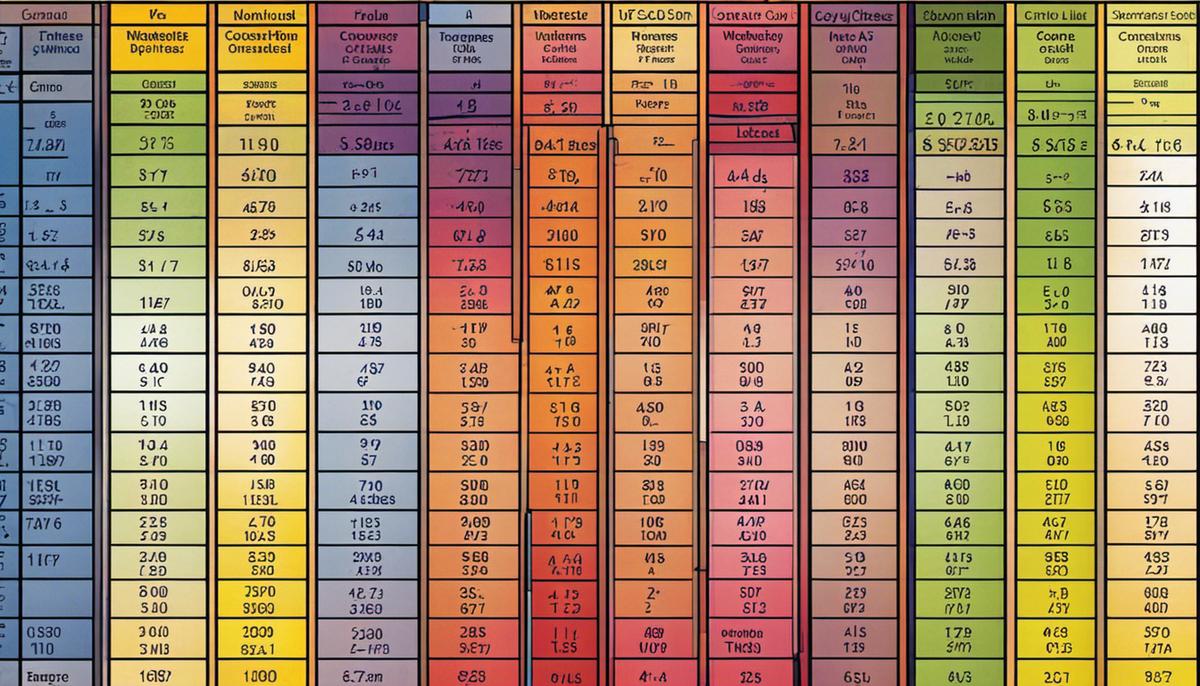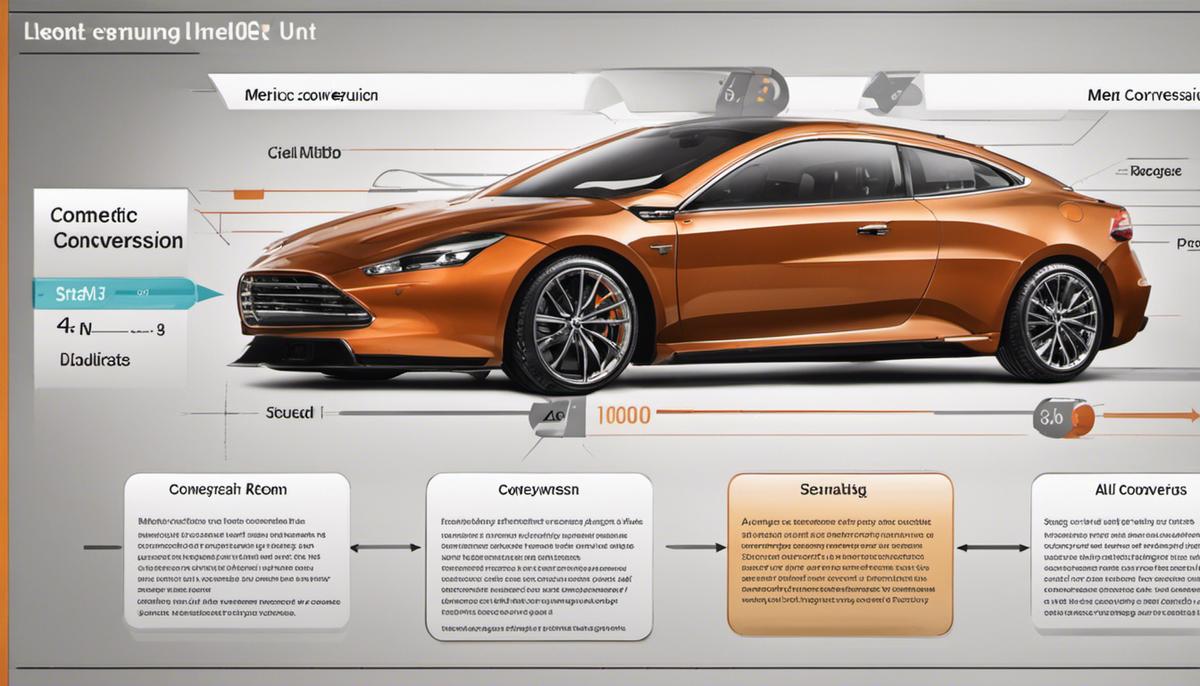In a world that increasingly explores scientific knowledge and global communication, understanding the metric system is crucial. Recognized and used extensively by many countries, it provides a standardized system of measurements, ensuring uniform interpretation across the globe. The core metric units, such as meters, grams, and liters, serve as the basis for measuring length, weight, and volume, while their relationship with customary units offers a broad perspective. This essay endeavours to investigate the characteristics of these units, exposes the framework of a metric conversion chart, and provides practical scenarios for converting between various metric units.
Understanding Metric Units
Understanding the Metric System: Basic Units of Measurement
The metric system is an internationally recognized decimal system of measurement. It is used worldwide, except for the United States, Liberia and Myanmar, which use the customary system of measurement. The basic units in the metric systems are the meter, gram, and liter.
- Meter (m): The meter is the basic unit of length in the metric system and corresponds to about 3.28 feet or 1.09 yards in the customary system. One kilometer, another common metric unit, is equal to 1000 meters or 0.62 miles.
- Gram (g): In weight measurement, the basic unit is the gram. This is much smaller than the weight units in the customary system. As a quick guide, an ounce in the customary system is approximately 28.35 grams. Meanwhile, a pound is equivalent to around 454 grams or 0.45 kilograms.
- Liter (L): For volume, liters are used in the metric system. One liter is equal to approximately 1.06 U.S. quarts or 2.11 pints. For smaller amounts, the milliliter is commonly used, with one liter equal to 1,000 milliliters.
Decoding the Metric System: Prefix System
An important aspect of understanding the metric system is its prefix system. The prefix indicates the multiple of the basic unit. For example:
- Kilo- means 1,000 (e.g. one kilometer equals 1,000 meters)
- Centi- means 1/100 (e.g. one centimeter equals 1/100 of a meter)
- Milli- means 1/1,000 (e.g. one milligram equals 1/1,000 of a gram)
This structured, decimal-based system gives the metric system its consistency and simplicity and makes conversions easier, as they involve factors of 10.
While familiarizing yourself with these conversions may take time, understanding the principle behind the metric system makes it easier to pick up the specifics.

Learning the Metric Conversion Chart
Step 1: Know the Common Metric Units and Their Relationships
The metric system is based on powers of ten and is different from the traditional Imperial system used in countries like the United States. The metric system is a decimal-based method of measurement, meaning each unit is ten times the size of the preceding unit. Here are the basic units from largest to smallest:
- Kilometer (km) – used for measuring long distances
- Meter (m) – used for measuring shorter distances
- Centimeter (cm) – used for even shorter distances such as height or length
- Millimeter (mm) – used for very small measurements
- Micrometer (μm) – used for microscopic measurements
For mass, the units are:
- Kilogram (kg)
- Gram (g)
- Milligram (mg)
- Microgram (μg)
Remember that each unit is 1000 times smaller than the unit before it. So, 1 kilogram equals 1000 grams, and 1 tonne equals 1000 kilograms.
Step 2: Learn the Conversion Process
Converting between units in the metric system just involves moving the decimal place. Going up to a larger unit, you move the decimal place to the left, and going down to a smaller unit, you shift the decimal place to the right. So, for example, converting 1 kilometer to meters means moving the decimal place three places to the right, resulting in 1000 meters.
Similarly, to convert 1 kilogram to grams, you move the decimal place three places to the right, turning it into a total of 1000 grams.
Step 3: Utilize Conversion Charts
Conversion charts can be helpful for quick reference. These charts enlist several metric units along with their equivalent values in other units. For example, a chart may list that 1 km = 1000 m, 1 m = 100 cm, and so on.
Step 4: Practice with Real-Life Examples
The most effective way to understand the conversion chart and metric units is to practice with real-life examples. For instance, consider the distance between two cities, the weight of an object, or the length of an item, and practice converting these values into different metric units.
Step 5: Use Online Tools or Apps
There are several online tools and apps available that can assist you with metric conversions. These tools can be very useful for checking your work or when you’re just starting out and need some extra help. While they are helpful, the ultimate goal should be understanding the metric system well enough to do conversions without them.
While the metric system can seem daunting initially, with practice and repeat usage, the process of conversion becomes second nature.

Practicing Metric Conversions
Understanding Metric Units
Metric units form part of a decimal-based system of measurement, used throughout the world. The basic units are meters (for length), grams (for weight/mass), and liters (for volume). Different prefixes are used to denote the various multiples and submultiples of these units. For example, a kilometer equals 1,000 meters, a kilogram equals 1,000 grams, and a milliliter equals 1/1000th of a liter.The Metric Conversion Chart
To effectively convert between metric units, it’s useful to understand a basic metric conversion chart. This chart lists the common metric prefixes, e.g., kilo, hecto, deka, base unit, deci, centi, and milli, and their corresponding values.For instance:
- 1 Kilometer (Km) = 1,000 meters (m)
- 1 Hectometer (Hm) = 100 meters (m)
- 1 Dekameter (Dm) = 10 meters (m)
- Base unit (Meter)
- 1 Decimeter (dm) = 0.1 meters (m)
- 1 Centimeter (cm) = 0.01 meters (m)
- 1 Millimeter (mm) = 0.001 meters (m)
These same relationships apply to grams and liters as well.
Practicing Metric Conversion
To practice metric conversions, start simple. Convert 5 kilometers to meters or 120 grams to kilograms. Remember to use the conversion chart to help you and multiply or divide as appropriate.
For example, to convert 5 kilometers to meters, recall that 1 kilometer equals 1,000 meters. So, multiply 5 by 1,000 to get 5,000 meters.
Applying Metric Conversions to Real World Problems
To master the application of metric conversions, consider real-world problems. For example, if you’re given a recipe in liter measurements, but your measuring cup only has milliliter lines, you’ll need to convert liters to milliliters.
Example: The recipe requires 1.5 liters of water and your measuring cup shows 500 milliliters. You would need to convert 1.5 liters into milliliters. Knowing that 1 liter equals 1,000 milliliters, you multiply 1.5 by 1,000, so you need 1,500 milliliters. So, you would measure out water three times with your 500 milliliter cup.
The constant practice would eventually make metric conversions come naturally and it would be invaluable for various real-life scenarios, not to mention educational settings.

Review and Assessment
Step 1: Review Metric Units
The metric system revolves around common units such as weight measured in grams (g), length measured in meters (m), and volume measured in liters (l). Each of these measurement units has a base, like the ones mentioned, and then scale up or down in factors of 10. For instance, 1 kilogram (kg) is 1000 grams, and 1 kilometer (km) is 1000 meters. Similarly, milli- and micro- units signify smaller increments, with 1 millimeter (mm) being 0.001 meters, and 1 microgram (µg) indicating 0.000001 grams.
Step 2: Understand the Conversion Chart
A metric conversion chart is a tool that helps in the conversion of one unit into another. For example, to convert kilometers into meters, the chart will show that 1 km equals 1000 m. Similarly, to convert grams into kilograms, the chart will tell you that 1 kg equals 1000 g. Familiarize yourself with the chart and the equivalences listed on it.
Step 3: Learn to Convert Units
To convert from one unit to another, you need to multiply or divide by the appropriate factor of ten. For example, if you want to convert 2 km into m, you multiply by 1000, getting 2000 meters. On the contrary, if you want to convert 3000 grams into kilograms, you divide by 1000, getting 3 kilograms.
Step 4: Practice Conversion Problems
Solving metric conversion problems can help consolidate your understanding of the system and facilitate quicker, more accurate conversions. These problems typically involve converting one metric unit to another. For instance, you may be asked to convert 5 kilometers to meters or 2000 millimeters to meters. The more problems you solve, the more adept you’ll become at converting between units.
Step 5: Test Your Knowledge
Quizzes can help test your understanding of metric unit conversions. You may find quizzes online or in textbooks. Ensure you know how to convert between all the common metric units, like kilometers to meters, grams to kilograms, liters to milliliters, etc. Answer the questions without consulting a conversion chart to truly test your knowledge.
Step 6: Identify Areas for Improvement
After taking the quiz, review your answers and the solutions. Pay attention to any mistake you may have made. Did you forget to multiply or divide by a certain factor? Did you confuse one unit with another? These areas of struggle indicate where you need to further study and practice your metric conversion skills.
By systematically reviewing metric units, understanding conversion charts, practicing unit conversions, testing your knowledge, and identifying areas that need further study, you can become proficient in metric unit conversions over time.

Mastering the conversion of metric units not only enhances our comprehension of measurements but also simplifies our interaction with numerical aspects of daily life and professional worlds. The metric conversion knowledge can be considered as a powerful tool that bridges diverse systems of measurements, leading us towards scientific literacy. Being proficient in this skill doesn’t only make you globally competent, but also fosters critical thinking and problem-solving capabilities. The areas covered offer a robust platform for any individual keen on becoming conversant with the metric system, opening doors to further exploration and application of this knowledge.
